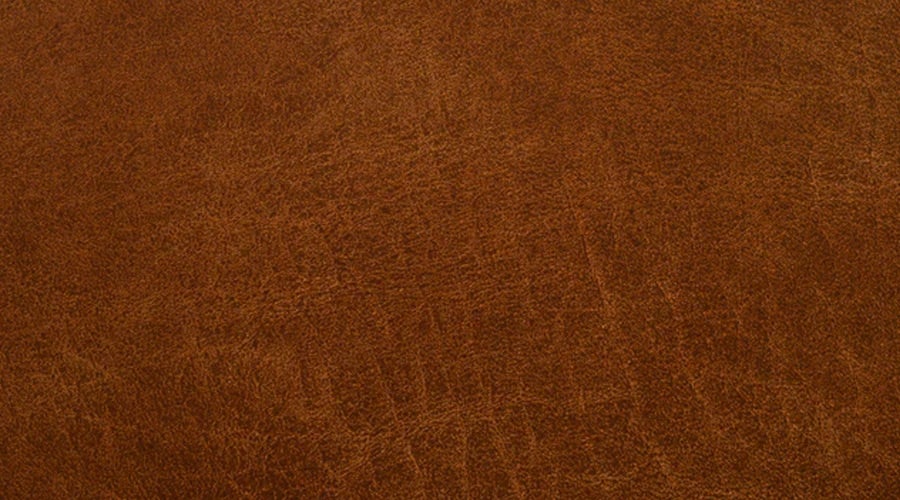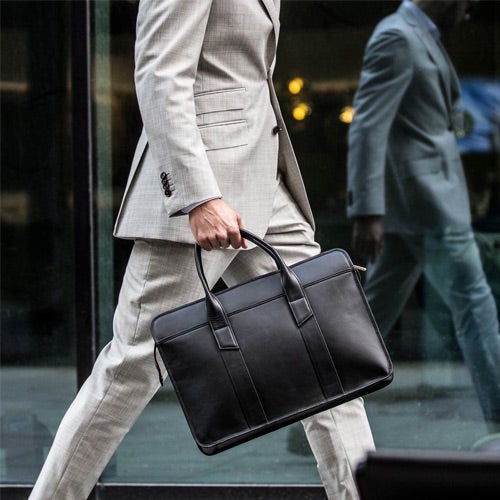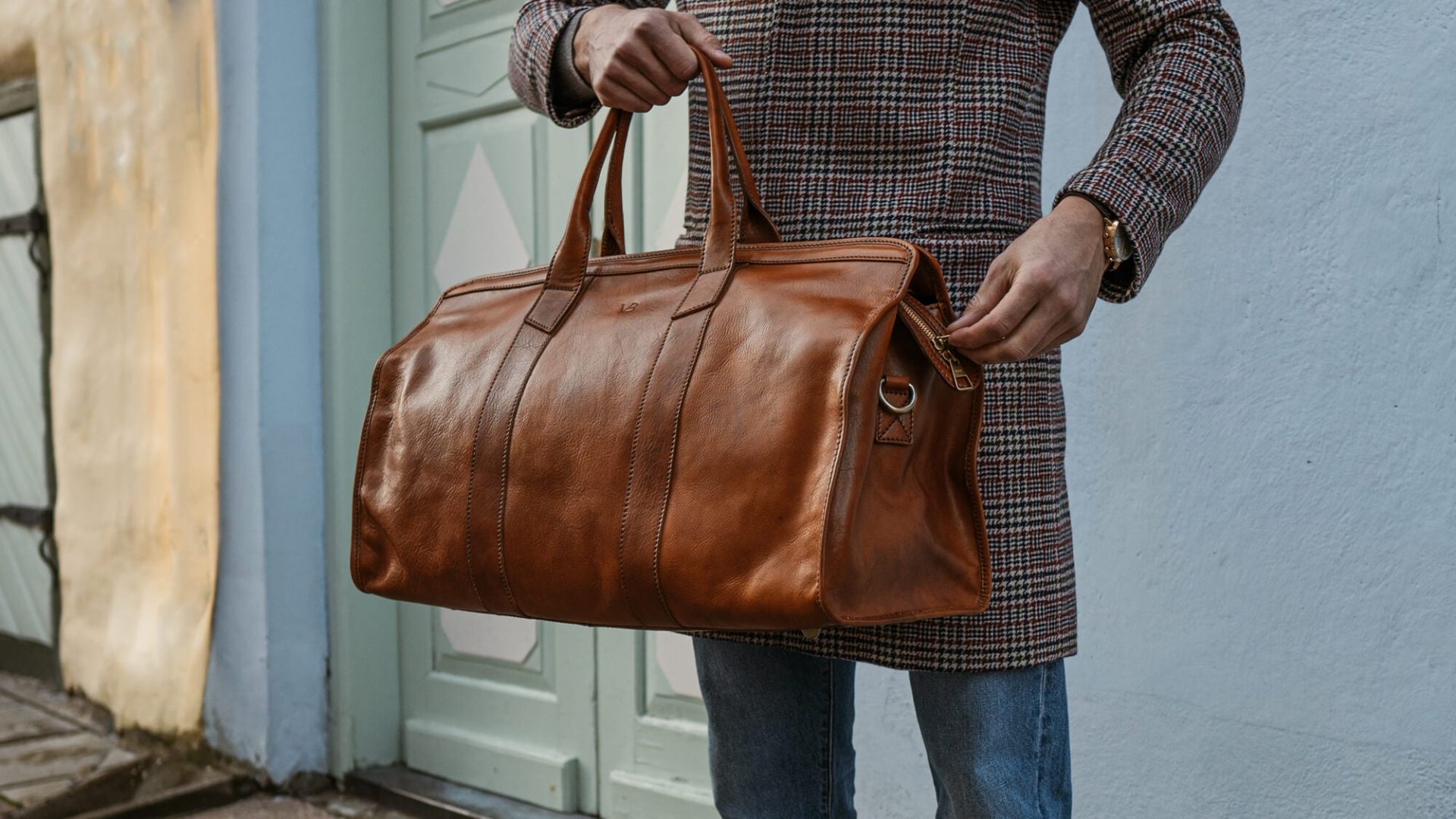
For leather experts and leather enthusiasts, the word ‘patina’ can be a kind of obsession. Patinas are something we love to look for and discuss. If you have questions about what type of leather develops a patina layer, what makes leather premium quality or what causes the color of patina, you have come to the right place.
What is patina leather?
Before we really get into leather patina it is useful to know that patina does not always refer to leather. Patina can refer to the ageing process of many materials such as wood, metal, stone, brass and copper.
The Statue of Liberty is one of the most famous examples of patina developing over several years. The Statue of Liberty was reddish-brown when she was first built in 1886. The copper that she is made from reacted with the elements (sun, wind, rain) and after twenty years or so, a greenish patina layer was developed. The patina is the green coating you see today if you visit the Statue of Liberty. This green coating serves to protect the original copper underneath.

One of the hallmarks of premium leather is that it ages beautifully forming a natural patina. As your high-quality leather ages, you will see gradual changes such as more depth to the color, increased suppleness and a light sheen.
The cool thing about leather patina is that each one is unique. It is the product of its own environment, so every premium leather item tells its own distinct story.
How does Patina happen?
Like a much-loved favorite pair of blue jeans, premium leather gets even more valuable with age and that is largely because of the patina that develops. The way in which a leather patina develops is dependent on several factors, but they can all be broadly classified under two categories: how the leather is used and the climate the leather is stored and used in.
As leather items age, they inevitably become exposed to different types of weather such as sun, wind, and rain. These elements will affect how the leather looks. Many leather items will also accumulate dirt and body oils as they age, think of leather belts or wallets that come in daily contact with human skin. Each variable that leather comes into contact with gradually alters its appearance. For example, rain can leave interesting watermarks and sunlight might cause a golden shade to emerge.
Here are the main variables that influence how patina develops on leather:
- Heat exposure
- UV rays exposure
- Oils and dirt from human skin
- Any type of moisture or rain
- Denim or fabric dye from clothing
- Everyday wear and tear (scratches and blemishes)
Why do people like patina?
Premium leather can be compared to a fine wine maturing slowly in a wine cellar, only improving with age. All leather enthusiasts will agree that the look of patina on leather is preferable and pleasing to the eye. There are three primary reasons that patina enhances the value of a product significantly.
Apperance
Brand new leather products can be lovely, but it is only through frequent use that they develop a beautiful uniqueness with the appearance of distinct imperfections.
Consider a designer cognac leather bag. The bag will be aesthetically appealing on the store shelf of course, but as it is used throughout the years it begins to take on its own character. That is part of the reason we love and cherish a leather patina.
Showcases Quality
Only high-grade leather will develop a natural patina, this is because the highest quality leather is taken from the outermost layer of an animal’s skin. A leather patina is a visual reminder that the leather is from the strongest, most expensive part of an animal’s hide.
Once leather forms patina it has a natural protective layer that serves to increase suppleness and improve durability.
History
A leather patina develops over a long period of time and use, therefore each patina tells its own distinctive story.
Imagine a well-used leather bag. It is likely darker in spots where you like to touch it as it absorbs the skin’s natural oils from your hands. The exterior may have a few scratches from that sightseeing trip you went on. Maybe there are golden spots where it has been exposed to sunshine throughout the days. Whatever the situation, after five years no two high-quality leather bags will look exactly the same anymore, and we think that is pretty cool.
Do all leather types form a patina?

Only the highest quality leather will form a patina layer. The four types of leather include full-grain, top-grain, corrected grain and genuine leather. Only the top two grades will form patina, full-grain and to a much lesser extent, top-grain.
The development of patina is also dependent on the tanning method that was done. Vegetable-tanned leather uses natural materials in the tanning process. This type of tanning method will allow for a beautiful patina. Chrome-tanned leather is a much quicker and less expensive process. Chrome-tanned leather generally will not develop a patina layer.
Best Patina Leather Types
Full-grain leather is the very highest quality leather. That is because it uses the uppermost layer of an animal’s skin. Imperfections in the skin such as scars, wrinkles or bites are never taken away or evened out. Because the skin is left intact it allows the leather to “breathe” which means it will absorb the oils in the atmosphere and from people it comes into contact with. This is crucial to the development of a patina.
We only use full grain leather in all of our products, including our briefcases and laptop bags.
Top-grain leather is also taken from the top cut of an animal’s skin, but the imperfections in the grain layer have been “fixed” through sanding and buffing. For this reason, top-grain leather is not considered the highest quality and does not develop the highly sought-after patina layer as easily.
Tanneries correct perceived imperfections by sanding and buffing to create unity in the look of the final piece. This tends to seal the pores of the top-grain leather which slows the leather’s natural ability to breathe.
You will often find top-grain leather in products where the manufacturer is looking for uniformity and durability, such as designer leather handbags.
Learn more about types of leather here.
How does tanning affect patina?
There are two primary methods of tanning leather. The oldest is vegetable tanning. This is a process that dates back thousands of years. It is called vegetable-tanning because of the material that are used, namely natural materials such as tree bark. This method of tanning ensures the leather is primed for patina.
Chrome-tanning is a newer, quicker method of tanning leather. As the name suggests it primarily utilizes chromium sulphate as an agent. It is estimated that about 90% of leather goods have been tanned using this method.
Chrome tanned leathers are consistently dyed and given heavier finish coatings which help create the right look and feel. Unfortunately, leather tanned in this way is impermeable and usually will not form a patina.
In contrast, vegetable-tanned leather has no synthetic coatings allowing it to develop a rich patina with age.
We are proud to say that we use full-grain vegetable-tanned leather: the absolute best grain and tanning combination possible. We are confident that our leather products are resilient, beautiful, natural and ready for patina.
This is particularly important when you want a bag to last for a long time, such as a leather travel bag.
Speeding up Patina Process
Patina develops slowly, although you may start to see small indications of patina after a month or in some cases even a week. If you are interested in accelerating the process of patina the best way to do it is to simply use your item a lot!
Don’t forget, premium leather products are strong and durable. They can stand a little rain and sunshine. Exposing your cherished leather items to the elements will only help to create the patina layer more quickly. High-quality leather items should not be hidden in a safe place, they should be used and celebrated.
Reducing Leather Patina
Our suggestion is to just let the beauty of the patina shine, it is after all a marker of quality. But if you are looking to slow down the patina process there are a few things you can try. Start by avoiding the elements. Handle your leather items gently, clean and condition them regularly. A natural waterproofing spray can also be useful to prevent watermarks.
Ten articles before and after
Best Large Wallets for Lots of Cash or Cards – JUNYUAN Bags | Professional Bag Manufacturer
What Happens When Leather Gets Wet & How to Fix It – JUNYUAN Bags | Professional Bag Manufacturer
Timeless Fashion: The CEO’s Guide to Confidence – JUNYUAN Bags | Professional Bag Manufacturer
Waterproof Laptop Backpack craftsman tool bags




 Mobile/What's App/Wechat
Mobile/What's App/Wechat E-Mail
E-Mail ADD
ADD




